Preface
During the past twelve years, I have taught Introduction to Biblical Hebrew in three theological seminaries, and I spent three years as the teaching assistant to a professor who taught the course to undergraduate students. The common cry of students in these courses has been, Just get me through this! And the usual comment of students who studied Hebrew some years ago is, Hebrew. Thats the one written backwards, isnt it?
And so I decided to develop a system for studying biblical Hebrew that would encourage rather than discourage beginning students and enable graduated students to continue to use and enjoy (okay, Im optimistic!!) Hebrew in their careers. Biblical Hebrew: An Introductory Textbook presents the basics of biblical Hebrew in a non-grammarians user-friendly format. The format is workbook rather than grammar. The print is large, with lots of space for students to make their own notes and marks. The Vocabulary List in each chapter is related directly to the assignment for the chapter. And the exercises are translation oriented, cumulative, and straightforward.
In this revised edition the book now has a Subject Index. Also, the Key to the Exercises has been removed from the book and will be available online at www.chalicepress.com. Also available online will be additional exercises for each chapter in the form of guided reading through the text of the Hebrew Bible.
Biblical Hebrew is not designed as a be-all and end-all grammar. Gesenius and Joon fill that position admirably. Biblical Hebrew is a textbook. It presents the essentials, the basics of biblical Hebrew. It concentrates on the norms rather than the exceptions. And it emphasizes tool-building and tool-use rather than memorization, because the pastors/teachers we produce will study the Hebrew text in their career settings with tools, not from memory. We must move away from approaching the learning of biblical Hebrew as we do the learning of modern French, German, or Spanish. The desired outcomes are vastly different.
At the end of an introductory course using Biblical Hebrew, students should have the basic tools necessary to deal with most of the intricacies of the biblical text. They will understand the basic structure of Hebrew phonology and morphology; Hebrew nouns, pronouns, and adjectives; Hebrew verbs; and Hebrew syntax. For the very complicated constructions, lexicons, analytical lexicons, and commentaries can guide students through the mire. The goal of my work is to produce students who are able to and who will continue to consult and examine the Hebrew text in their preaching, teaching, and studying of the Hebrew Bible. Their  (shalom) will be my reward.
(shalom) will be my reward.
Nancy L. deClaiss-Walford
Atlanta, Georgia
Acknowledgments
My thanks go out to many, many students in classes at George W. Truett Seminary at Baylor University, at the McAfee School of Theology at Mercer University in Atlanta, Georgia, and at Columbia Theological Seminary in Decatur, Georgia, who put up with sometimes rough and always photocopied pages of material rather than a nicely finished textbook. They were gracious and immeasurably helpful in proofreading and critiquing. Thanks also goes to my friends and colleagues, W. H. Bellinger, Jr., at Baylor University, Walter Crouch at Carson-Newman University, and Dwayne Howard at Campbell University, who tested the book in their Introduction to Hebrew courses and gave me valuable feedback on it. I extend a special word of thanks to my student assistants Dina Helderman and Jessica Brown, who spent innumerable hours typing, formatting, and proofreading draft after draft of the book.
Jon Berquist at Chalice Press expressed an interest in the work some years ago and deserves a lions share of the praise for the quality of the publication. He told me time after time, If it comes down to quality versus speed, we will go for quality every time. Thank you, Jon, for not allowing me to rush the project along. To Alan Culpepper and my colleagues at the McAfee School of Theology, I say thank you for listening to all my stories and woes as the book wended its way through the publication process. To Frederic Bush and Paul Gaebelein of Fuller Theological Seminary I owe a debt of gratitude that can never be expressed fully. They instilled in me a love for the Hebrew language that has remained strong through many years of study. And to my familymy husband, Steve, and my children, Calvin and Aaronas they put up with endless hours of mom working on her book again, I can only say, I love you!!
Shalom to all of you, and my thanks and gratitude.
Nancy L. deClaiss-Walford
August, 2002
With the second printing of Biblical Hebrew: An Introductory Textbook comes another list of those who have helped with the process. Again, innumerable classes of Introduction to Hebrew have helped to find errors in the original printing and have made suggestions for additions and updates. Again, my student assistants, Michael Strickland in particular, have spent many hours helping with corrections and changes to the book.
Finally, once again, the folks at Chalice Press have been a delight to work with. Thanks go to the many hands who have worked hard to produce this book.
Nancy L. deClaiss-Walford
September, 2005
Chapter One
Consonants and Vowels
Hebrew is a member of the Semitic family of languages. Cognate languages include Akkadian, Arabic, Aramaic, Syriac, Ethiopic, Phoenician, Ugaritic, and others.



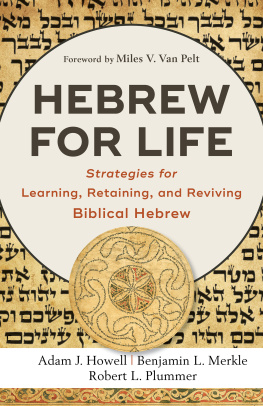
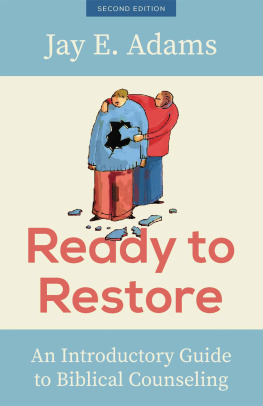
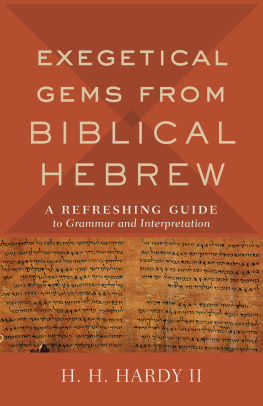

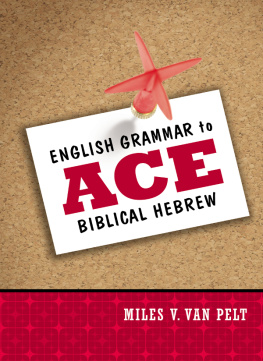
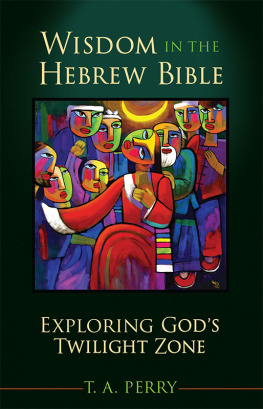
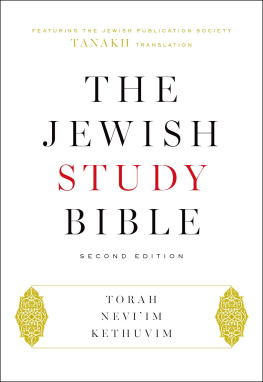
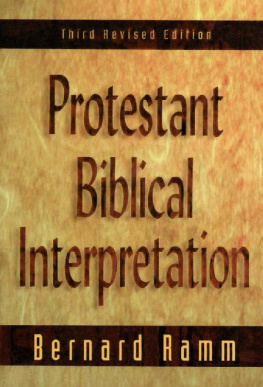

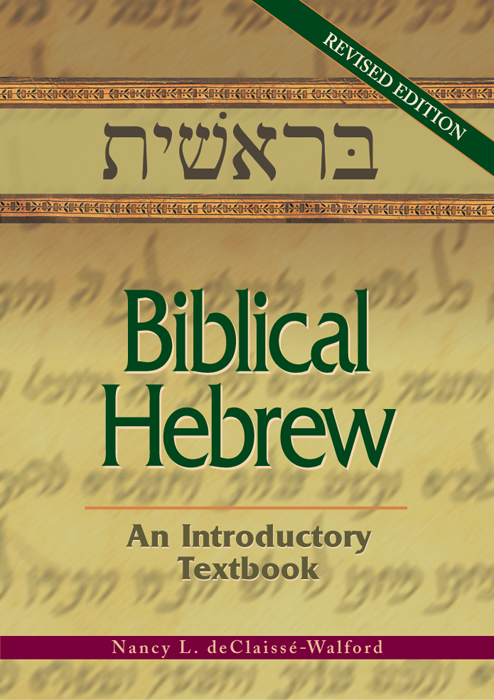
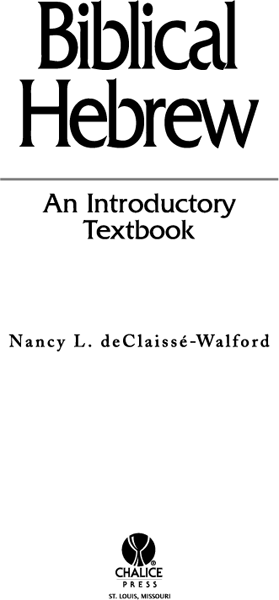









 (shalom) will be my reward.
(shalom) will be my reward.